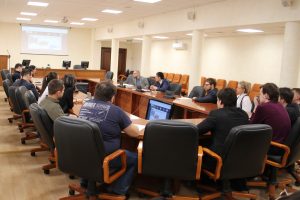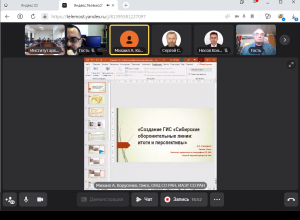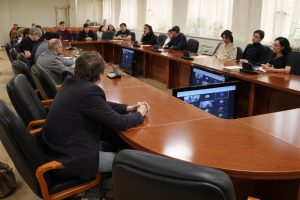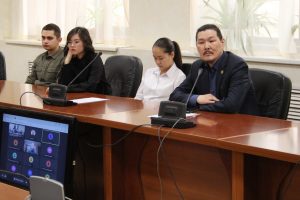All-Russian round table “Topical issues of historical and archaeological study of the defensive lines of Russia”
On April 21, 2023, the Tatarstan Academy of Sciences hosted the All-Russian round table “Topical issues of historical and archaeological study of the defensive lines of Russia”, dedicated to the presentation of the results of studies of historical and cultural heritage sites of the borderlands of Russia of the XVI-XVIII centuries.
The round table was organized by the Institute of Archaeology named after A.Kh. Khalikov of the Tatarstan Academy of Sciences and Kazan (Volga region) Federal University with the support of the Russian Historical Society and the Foundation “History of the Fatherland”. The round table was attended by 70 people in online and offline formats.
In 2020, on an assignment of the President of the Russian Federation, work on revealing the cultural heritage objects related to the Belgorod defensive line, their state protection, scientific study and further use for the development of educational tourism as well as the creation of the tourist route to the locations of the Belgorod defensive line sites was organized. In 2021, the project covered the European part of Russia and in 2022 – Trans-Urals, Siberia and the Far East. The project preparation was coordinated by the Institute of Archaeology named after A.Kh. Khalikov of the Tatarstan Academy of Sciences. The research results of the European part of Russia were presented in the summer of 2022 in the form of the book “Lines of Growth. Monuments of Historical and Cultural Heritage of the borderlands of Russia in the XVI-XVIII centuries”, prepared by specialists of the Russian Historical Society, Institute of Archaeology RAS, Federal Archival Agency, Kazan Federal University and Institute of Archaeology named after A.Kh. Khalikov of the Tatarstan Academy of Sciences.
Within the project the information about the preserved defensive lines sections of the borderland of the European part of Russia of the XVI-XVIII centuries was updated, special attention was paid to the necessity of revealing and preserving them. These topical issues were touched upon in the speeches of A.G. Sitdikov (Institute of Archaeology named after A.Kh. Khalikov of the Tatarstan Academy of Sciences) “Defensive lines in Russia: study and preservation”, E.L. Dubman (Samara University) “On the issue of studying, preserving and popularizing the fortification sites of the Southern Middle Volga borderland of the late XVII – early XVIII centuries”, A.N. Golotvin (Archaeological park “Argamach”) “The archaeological heritage of the Belgorod defensive line. Study, preservation, use”.
During the round table preliminary results of study within the project in the Western and Eastern Siberia and the Far East were presented: M.A. Korusenko (Omsk Scientific Center of the Siberian Branch RAS) “Creation of GIS “Siberian defensive lines: results and prospects”, A.P. Borodovsky (Institute of Archaeology and Ethnography of the Siberian Branch RAS) “Wooden fortresses in the Novosibirsk Ob region – from the archaeological heritage object to an “attractive place”, S.G. Skobelev (Novosibirsk State University) “Formation peculiarities of the Russian fortification complex of the southern Yenisei region in the XVIII century”.
Digital developments of the Institute of Archaeology named after A.Kh. Khalikov and the Omsk Scientific Center of the Siberian Branch RAS in the field of creating geoinformation systems of defensive lines also were presented at the round table.
This event was the third in the series of round tables dedicated to the project “Study of defensive lines”. The next round table will be held in Omsk.






